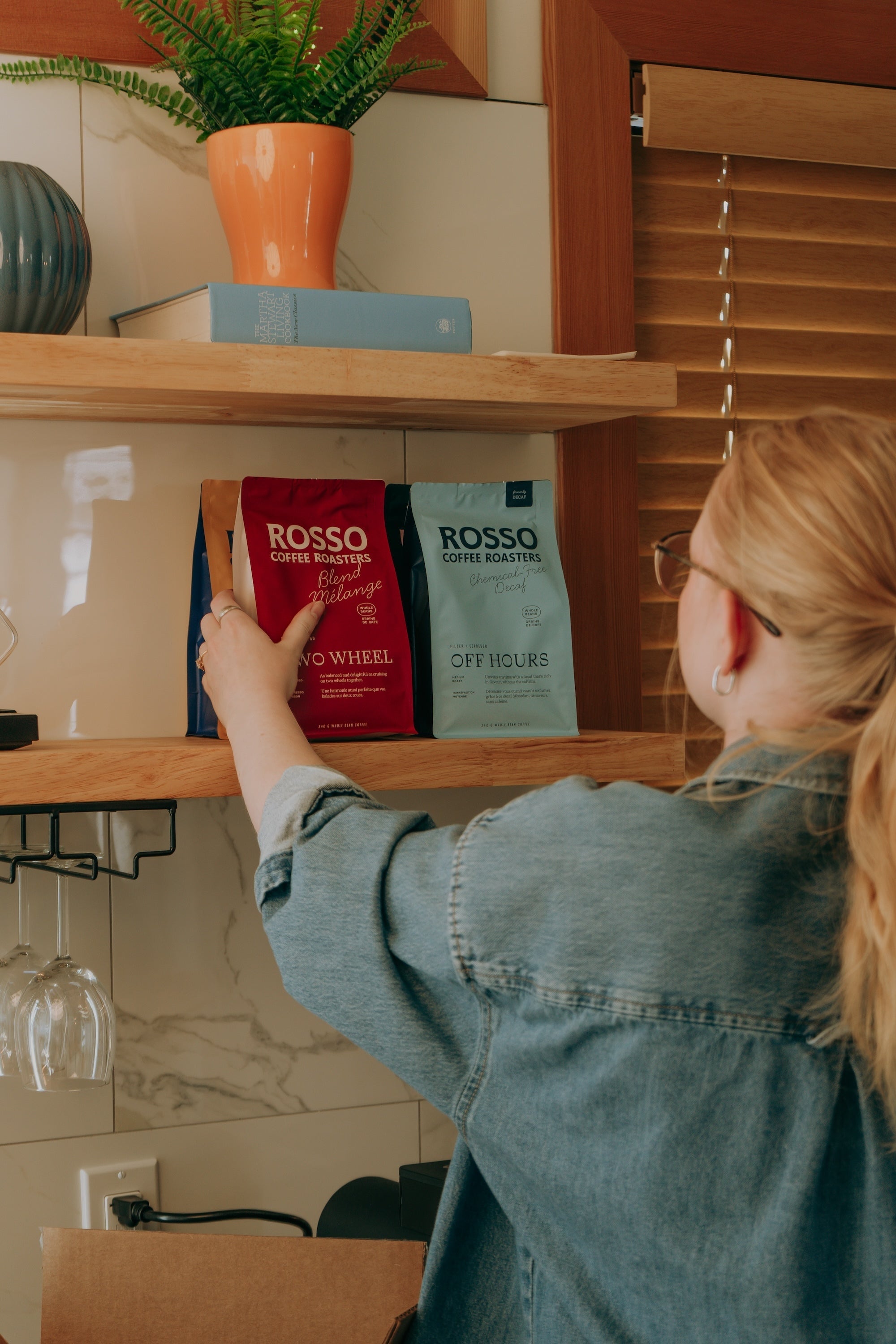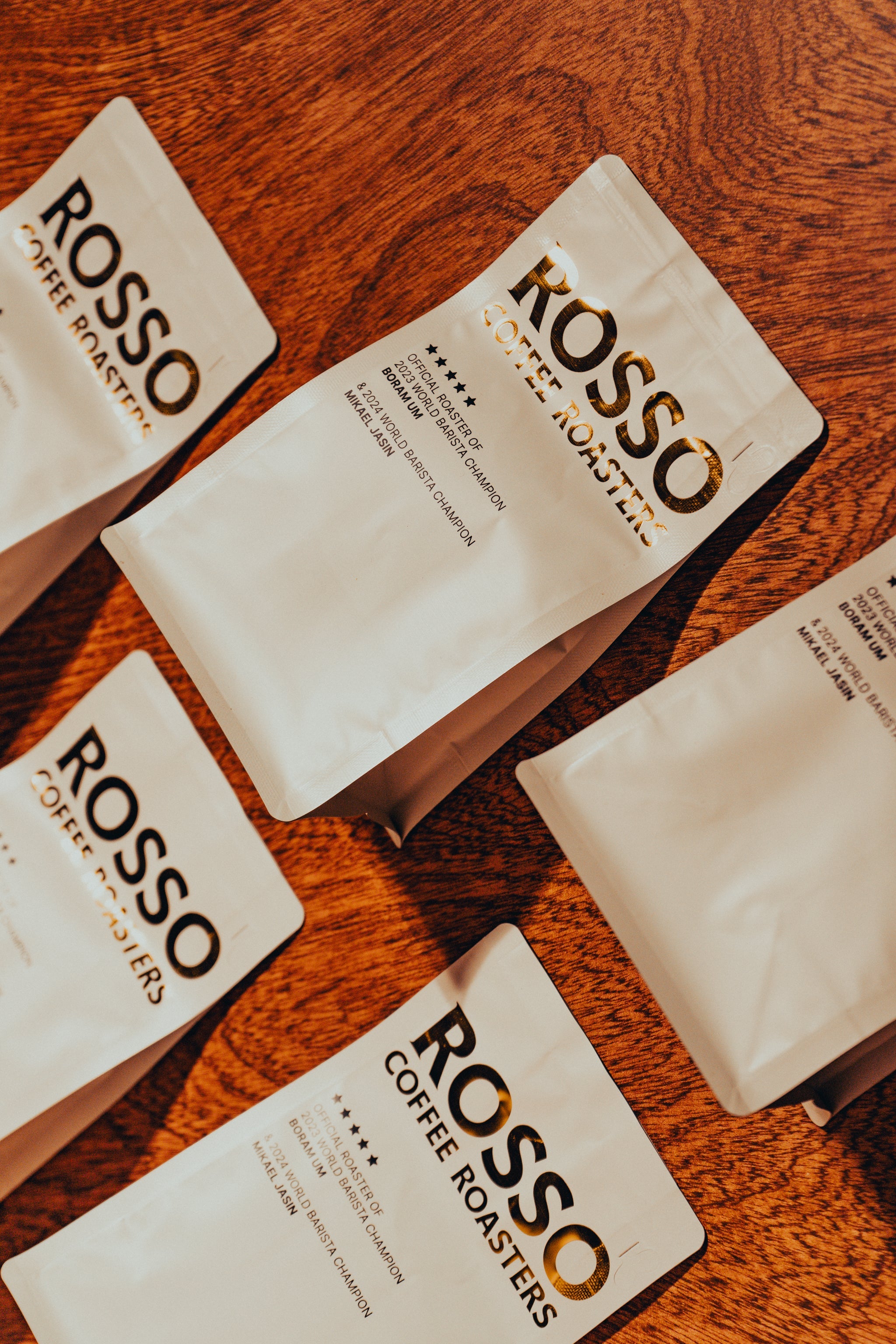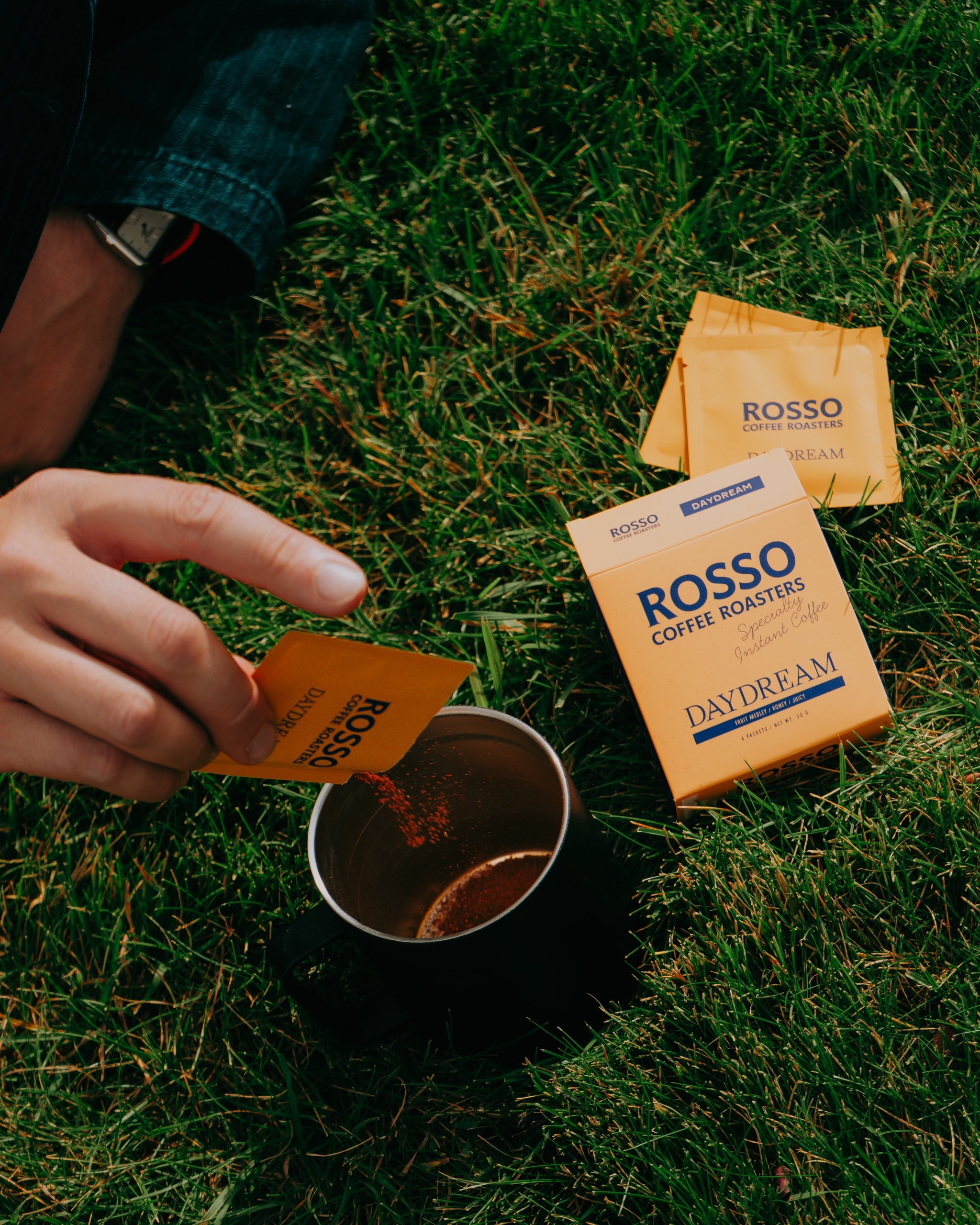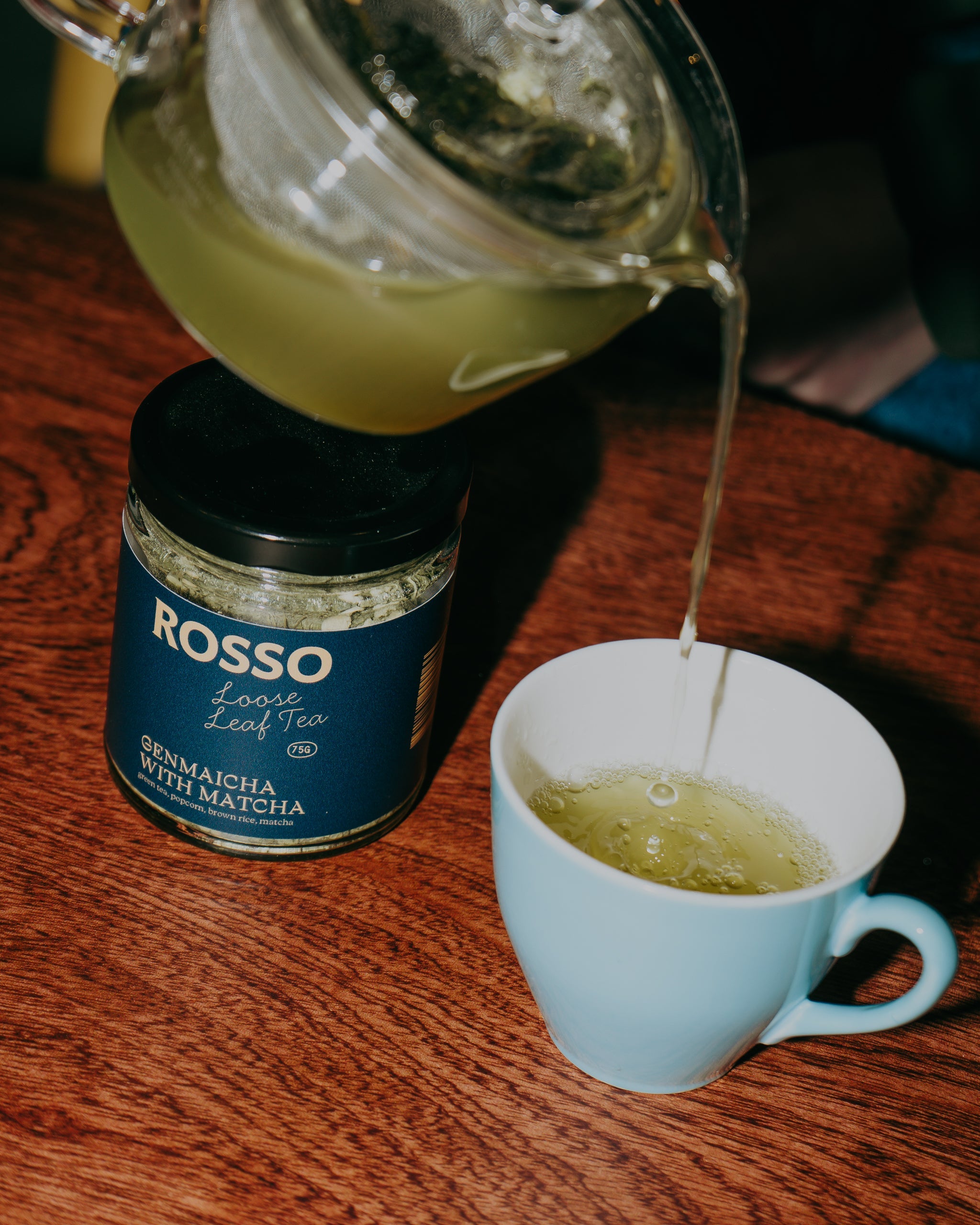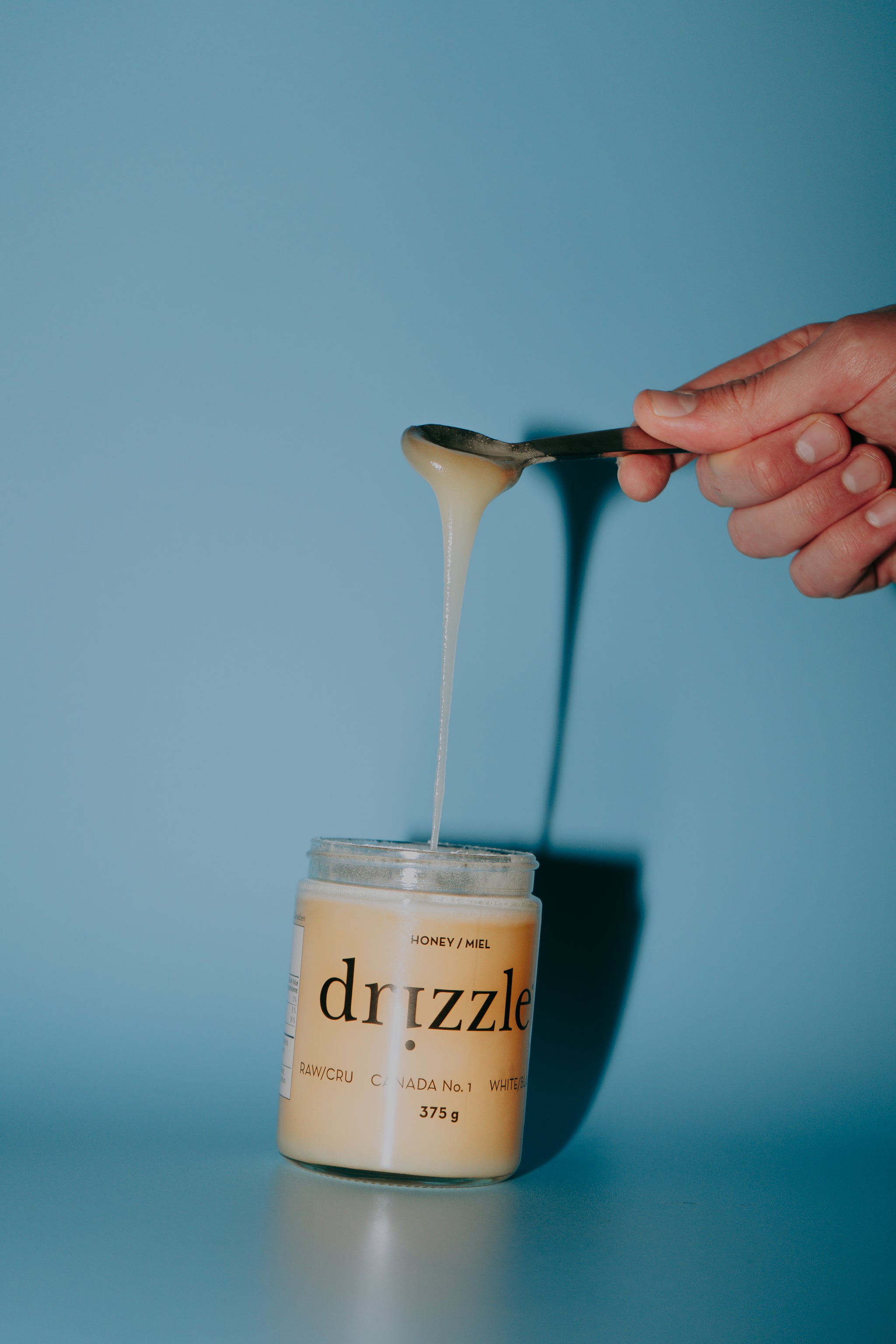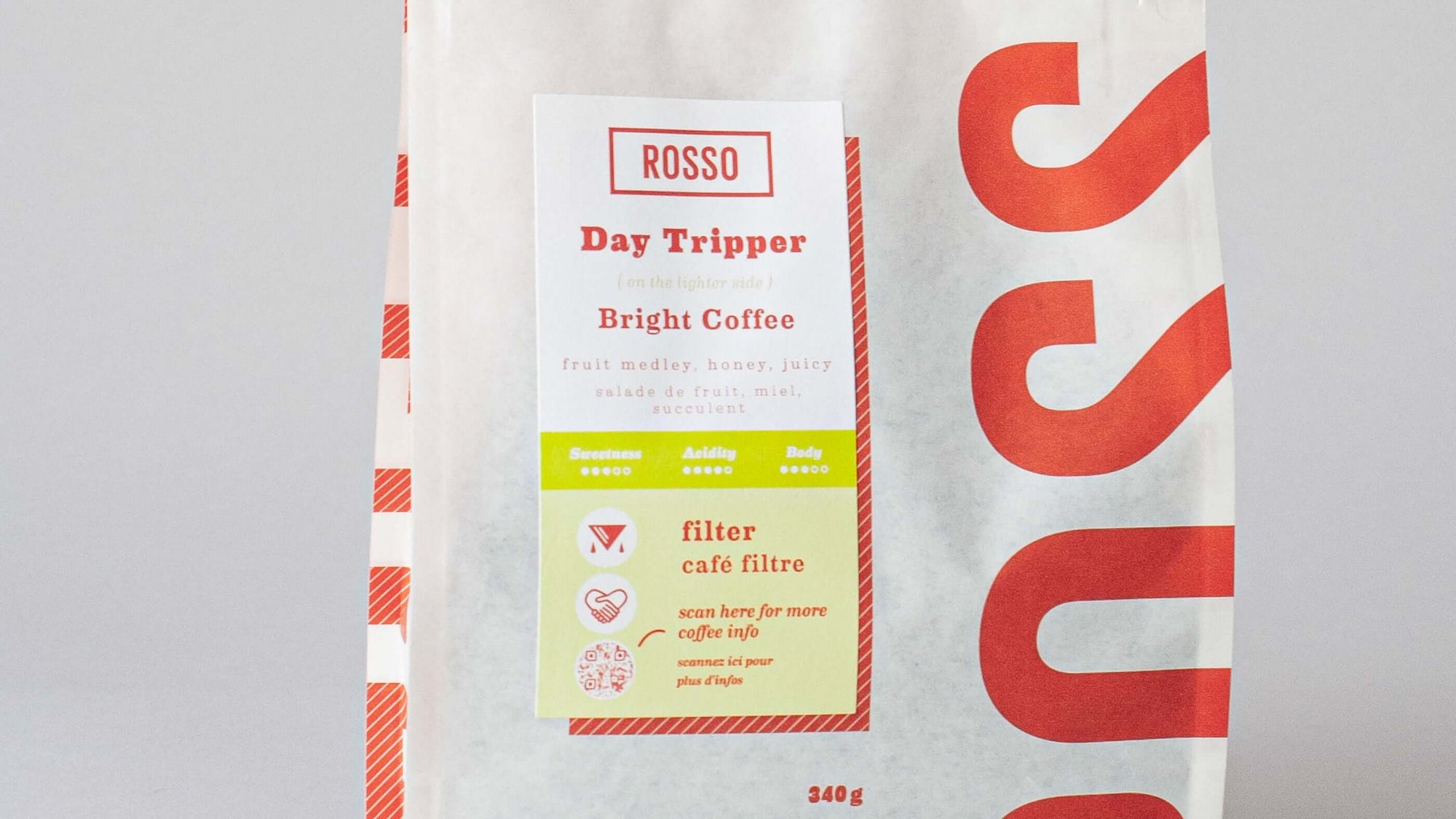

Sweetness, Acidity, and Body Explained
When you see a bag of Rosso coffee, you might notice the words sweetness, acidity, and body, rated on a scale of 0-5 on the label. This scale is showing the intensity in which we perceive these attributes. We thought it would be beneficial to speak to each of these categories and assist in breaking down what they mean and why they’re so key when choosing the right coffee for you. For us, these are the three most important flavour attributes to define a cup of coffee.

As a note before we get into each of these categories, coffee is one of the most chemically complex flavour stuff we have on the planet. When you read tasting notes on our retail bags, or you see the intensities of sweetness, acidity, and body, these all naturally occur due to origin, variety and processing of each specific coffee. Based on how we roast the coffee, this can emphasize or minimize one of these characteristics, and the same goes with brewing. This is important to highlight as we do not add any flavouring to our coffees.
What we strive for when we’re sourcing coffee is a balanced cup profile. Often you’ll see the sweetness and acidity intensities are at very similar levels on the bag—this is something we strive for. We’ll have a coffee here or there that’s much more acidic than sweet, and more commonly, we’ll have higher sweetness than acidity, such as Turning Point. Sweetness is our focus in terms of flavour intensities. For a well balanced cup of coffee, we want no one component to overwhelm the others. Though you still want the cup to taste interesting and complex.

Sweetness is really a composite of a whole host of components. The sweetness we taste in coffee is due to fructose, sucrose and other sugar compounds forming during the ripening stage of the coffee cherry itself—it’s these same sugar compounds that caramelize during the roasting process, turning a raw, green coffee bean into a hue of brown. (For more on sugars in coffee, read our blog about our new SOVDA sorter and how this is ensuring maximum consistency in our coffees.)
There are a myriad of different flavours you may find associated with sweetness in a coffee. Sweetness in a cup of brewed coffee or shot of espresso can show a pleasant, fruity, or chocolatey, or nutty, or other flavour characteristic to the coffee. Most commonly, a natural processed coffee will show fruit forward characteristics—this is due to the coffee cherry being fully dried during processing, with the seeds inside absorbing concentrated sugars from the fruit itself!
As an example, natural processed East African coffees often have a dense fruity sweetness. On the other hand, a natural processed coffee from Brazil is usually sweet and rich in chocolate, nutty and brown sugar type of flavours.
Acidity can be a difficult thing to describe as it’s not super common in North American diets. Acidity is easiest to communicate as the sensation of ‘sour’, which in coffee, ‘sourness’ is a bad thing. If a coffee is sour, that means that sweetness isn’t there to back up and balance the acidity. If it’s balanced with the sweetness, the flavours should come through with a pleasant, crisp, fresh, mouthwatering quality.
Acids are a quality indication in coffee! Origin, variety, processing method and climate will also affect the bean’s acidity. Generally speaking, the higher the altitude, the cooler the temperature of the growing region, the more acidic a coffee will be—this is due to a much slower maturation process for the fruit itself, leading to more concentrated sugars in the cherry and more ability to create different acidic compounds.
Coffee producers often ferment their coffee after harvesting the cherries, and this fermentation stage will allow yeasts to metabolize the sugars and convert them into acidic compounds. As coffee production becomes more and more sophisticated, this process is becoming more and more controlled and intentional, leading to a movement of coffee producers today striving to create specific types of acidity within their coffees. Again, acidity correlates with quality in the specialty side of the industry. More acidity = more complexity = more intrigue from consumers = more dollars to the producer.

Common acidic compounds in coffee will mirror flavours we know out in the world, such as citric (lemons, orange, grapefruit), malic (green apples, stone fruits), tartaric (grape-like, bananas), and many other types of acids can all be examples of desirable acidic flavours. Without one of these acids your cup of coffee could fall flat, or taste somewhat boring. So, our goal is to highlight acidity when and where we can, though we always try to keep it in balance with the sweetness! Coffees that are too acidic can be unpleasant.
If you do not like acidity in your coffee, we would recommend drinking a more developed roast profile, as roasting coffee greatly affects the acidity in a coffee.
A great way to gauge how acidic a coffee is is to refer to tasting notes. Coffees that have chocolatey, nutty or caramelized sugar type of flavour notes are likely to be low to no acidity. On the other hand, if you see fruit flavours on the bag, these are going to have a higher level of acidity in the cup. Don’t let acidity be a turn off, once you try a cup that has a beautiful, flavour clear and mouth watering acidity, it can be hard to go backward!
Body involves the tactile sensation of a coffee, or the mouthfeel. This category will give an idea of density, viscosity and how a coffee might feel on the palette. Descriptions you may see or hear can range from watery, silky, velvety, dense, coating, smooth, sticky, or potentially a relation to something widely recognized like molasses. If I read or hear molasses, I’m going to think the body is rich and dense!
This is an attribute that can quite easily be manipulated through the brewing process—you can easily increase the body of a coffee by grinding finer (more surface area), dosing more coffee, or using less water in your ratio of water to coffee.
Often, natural processed coffees will have a heavier body and overall tactile sensation—again, this is very much to do with sugar content in the coffee beans from the processing. A washed coffee on the other hand will usually be lighter in body and potentially more silky. Of course, this is a generalization, it does not mean that every washed coffee is light and silky!

Certain brewing techniques can also assist with body profile. A French Press will make for a richer cup profile due to the full immersion brewing style, whereas a pourover has less contact time between the water and coffee, and also passes through a paper filter, leading to less body and more flavour clarity. However, what we’re going off of for our labels, is the profiles present in the bean based on cupping, our standardized method of evaluation used for purchasing and quality control.
At the end of the day, personal preference is going to drive your choices in terms of which coffee best suits you. We encourage you to have dialogue with our baristas as they can help you find a coffee that best matches your preferences, or if you’re shopping for coffee online, try our Coffee Match Quiz.
Pro tip: if you drink your coffee with a splash of cream or milk, acidic coffees often don’t vibe well as they can curdle dairy! For more, see our blog on Creamer & Curdling.

1 comment
-
Indeed it was helpful. Thanks
Lawrence on

